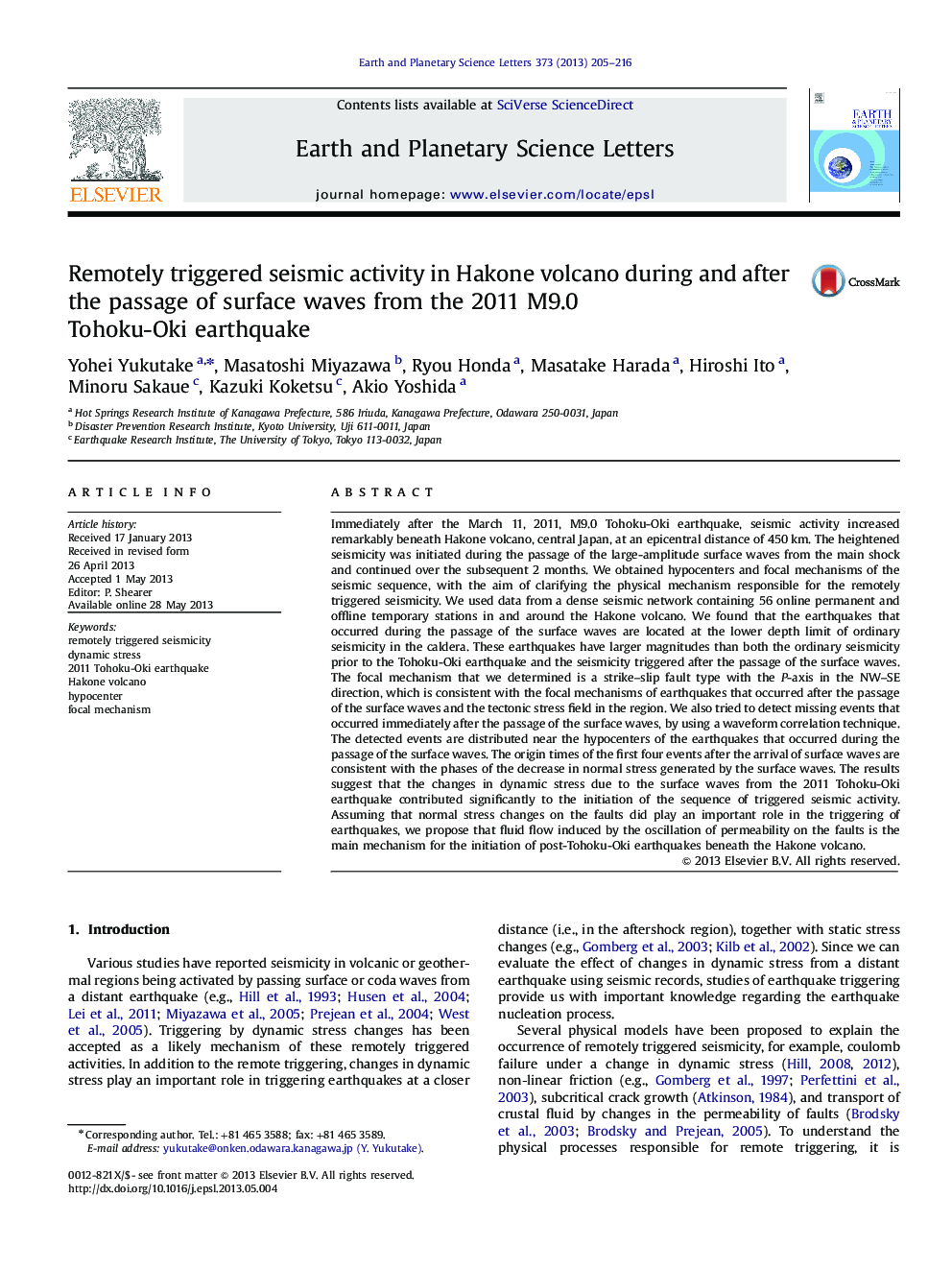| کد مقاله | کد نشریه | سال انتشار | مقاله انگلیسی | نسخه تمام متن |
|---|---|---|---|---|
| 4677079 | 1634782 | 2013 | 12 صفحه PDF | دانلود رایگان |

• Seismic activity at Hakone was initiated immediately after surface wave arrival.
• Events coincident with the surface waves occurred in the caldera.
• Stress changes by the surface waves are consistent with the event origin times.
• Changes in dynamic stress contributed to the initiation of seismic activity.
Immediately after the March 11, 2011, M9.0 Tohoku-Oki earthquake, seismic activity increased remarkably beneath Hakone volcano, central Japan, at an epicentral distance of 450 km. The heightened seismicity was initiated during the passage of the large-amplitude surface waves from the main shock and continued over the subsequent 2 months. We obtained hypocenters and focal mechanisms of the seismic sequence, with the aim of clarifying the physical mechanism responsible for the remotely triggered seismicity. We used data from a dense seismic network containing 56 online permanent and offline temporary stations in and around the Hakone volcano. We found that the earthquakes that occurred during the passage of the surface waves are located at the lower depth limit of ordinary seismicity in the caldera. These earthquakes have larger magnitudes than both the ordinary seismicity prior to the Tohoku-Oki earthquake and the seismicity triggered after the passage of the surface waves. The focal mechanism that we determined is a strike–slip fault type with the P-axis in the NW–SE direction, which is consistent with the focal mechanisms of earthquakes that occurred after the passage of the surface waves and the tectonic stress field in the region. We also tried to detect missing events that occurred immediately after the passage of the surface waves, by using a waveform correlation technique. The detected events are distributed near the hypocenters of the earthquakes that occurred during the passage of the surface waves. The origin times of the first four events after the arrival of surface waves are consistent with the phases of the decrease in normal stress generated by the surface waves. The results suggest that the changes in dynamic stress due to the surface waves from the 2011 Tohoku-Oki earthquake contributed significantly to the initiation of the sequence of triggered seismic activity. Assuming that normal stress changes on the faults did play an important role in the triggering of earthquakes, we propose that fluid flow induced by the oscillation of permeability on the faults is the main mechanism for the initiation of post-Tohoku-Oki earthquakes beneath the Hakone volcano.
Journal: Earth and Planetary Science Letters - Volume 373, 1 July 2013, Pages 205–216